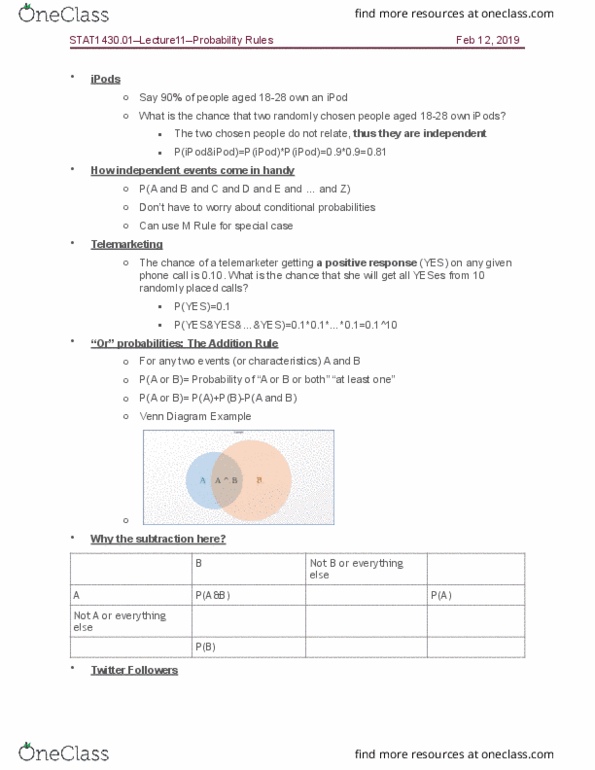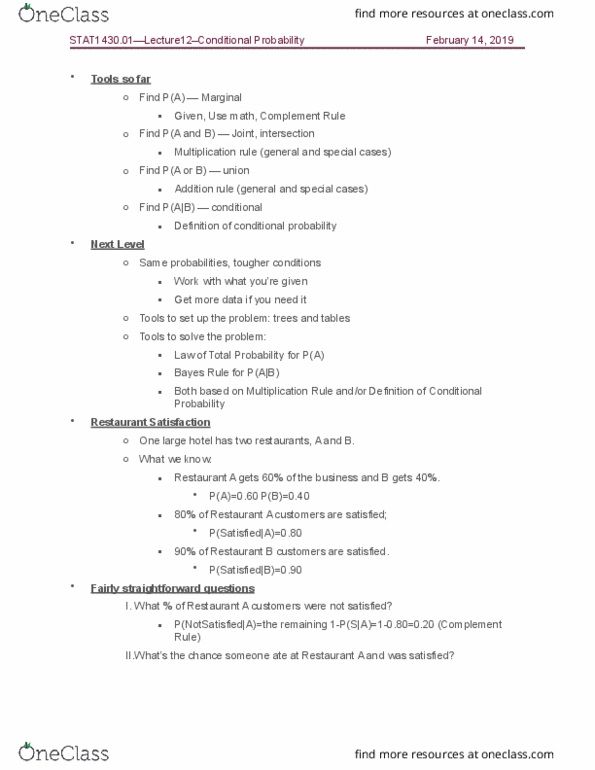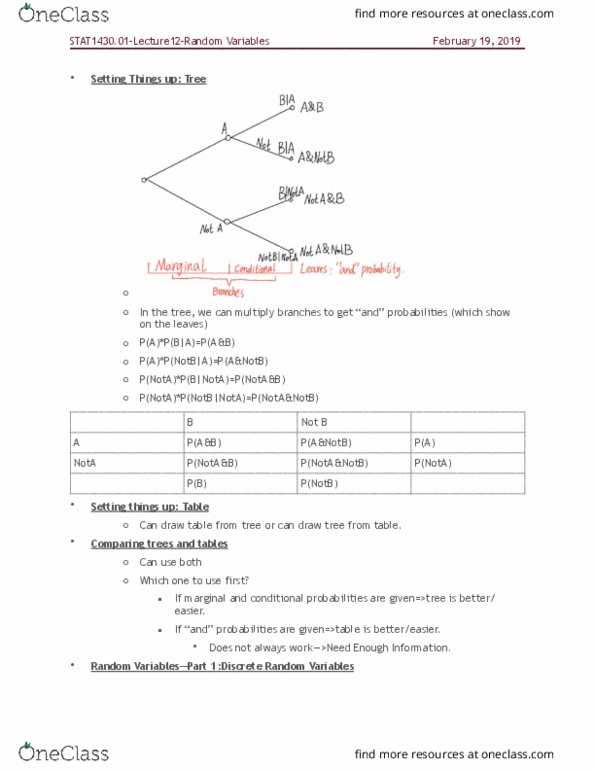STAT 1430 Lecture Notes - Lecture 12: Conditional Probability, Bayes Estimator
STAT 1430 verified notes
12/30View all
Document Summary
Next level: same probabilities, tougher conditions, work with what you"re given, get more data if you need it, tools to set up the problem: trees and tables, tools to solve the problem: Law of total probability for p(a: bayes rule for p(a|b, both based on multiplication rule and/or definition of conditional. Restaurant satisfaction: one large hotel has two restaurants, a and b, what we know, restaurant a gets 60% of the business and b gets 40%, p(a)=0. 60 p(b)=0. 40. 80% of restaurant a customers are satisfied: p(satisfied|a)=0. 80. 90% of restaurant b customers are satisfied: p(satisfied|b)=0. 90. Fairly straightforward questions: what % of restaurant a customers were not satisfied, p(notsatisfied|a)=the remaining 1-p(s|a)=1-0. 80=0. 20 (complement. Ii. what"s the chance someone ate at restaurant a and was satisfied: p(a and satisfied)=multiplication rule=>went to a and once there also were satisfied with the service. Solving questions i-ii: why they are fairly straightforward, rules used: complement, multiplication, solve, p(notsatisfied|a)=1-p(satisfied|a)=1-0. 8=0. 2, p(a and s)=p(a)*p(satisfied|a)=0. 60*0. 80=0. 48, harder questions.







